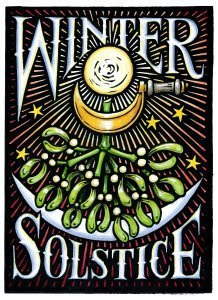skip to main |
skip to sidebar
Re-birth of the Sun

This is
from the Religious Tolerance site:
"Solstice" is derived from two Latin words: "sol" meaning sun, and "sistere," to cause to stand still. The lowest elevation occurs about DEC-21 and is the winter solstice -- the first day of winter, when the night time hours are maximum.
In pre-historic times, winter was a very difficult time for Aboriginal people in the northern latitudes. The growing season had ended and the tribe had to live off of stored food and whatever animals they could catch. The people would be troubled as the life-giving sun sank lower in the sky each noon. They feared that it would eventually disappear and leave them in permanent darkness and extreme cold. After the winter solstice, they would have reason to celebrate as they saw the sun rising and strengthening once more. Although many months of cold weather remained before spring, they took heart that the return of the warm season was inevitable. The concept of birth and or death/rebirth became associated with the winter solstice. The Aboriginal people had no elaborate instruments to detect the solstice. But they were able to notice a slight elevation of the sun's path within a few days after the solstice -- perhaps by DEC-25. Celebrations were often timed for about the 25th.
 This is from the Religious Tolerance site:
This is from the Religious Tolerance site:
No comments:
Post a Comment
New policy: Anonymous posts must be signed or they will be deleted. Pick a name, any name (it could be Paperclip or Doorknob), but identify yourself in some way. Thank you.